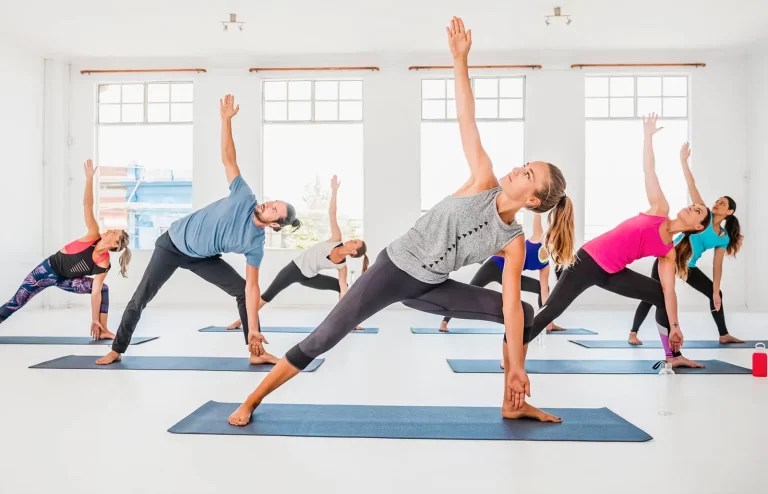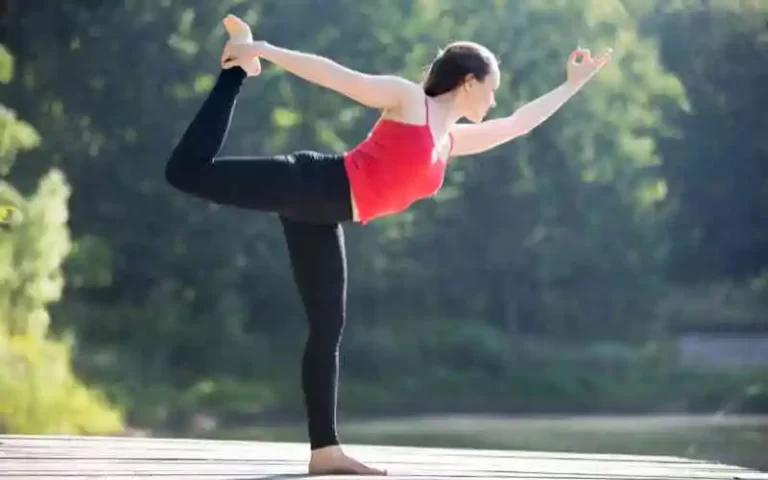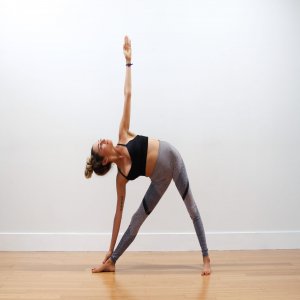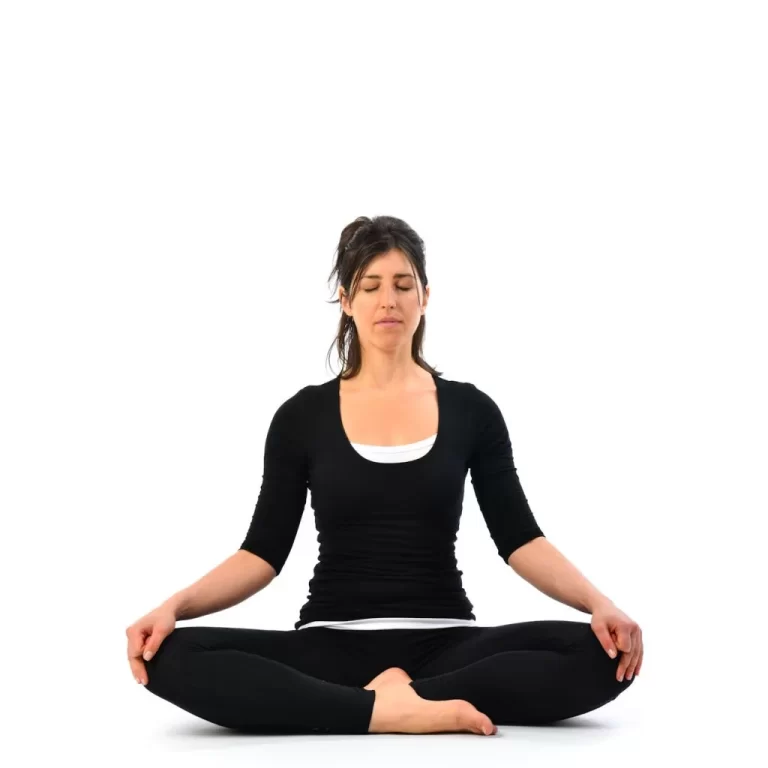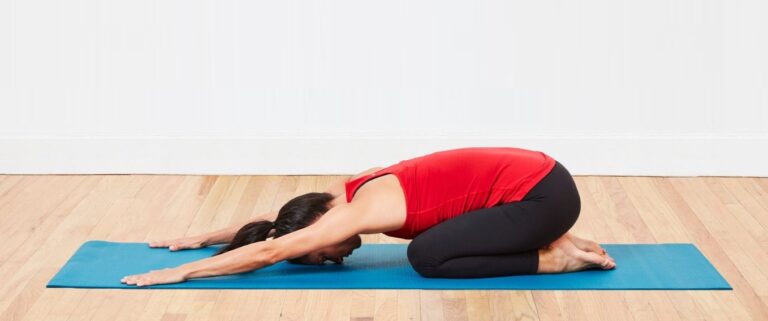Yoga Meditation
Introduction of Yoga Meditation
- Over 5000 years ago, the practices of meditation and yogic meditation were first documented. It is believed that the practices of yoga and meditation originated in northern India since these ancient books, known as the Rig Veda, make reference to them.
- It’s believed that about 500 million people worldwide routinely do yoga and meditation physically. That is a sizable population that can benefit from group meditation. Perhaps they had knowledge that we do not. Let’s investigate, shall we?
- It is possible to integrate deliberate breathing with the physical components of yoga and meditation. It can be a highly effective strategy to do this while keeping your eyes closed to focus attention. Furthermore, the healing properties of yoga and yoga meditation can help to strengthen the immune system while lessening the severity of some physical conditions like anxiety, insomnia, and hypertension. Everything is well.
- As you may already be aware, if you’ve ever taken a yoga class, the final pose is known as savasana (pronounced “Shavasana”), or corpse pose, in which you lay peacefully and comfortably on your mat. This pose is a type of yoga meditation and is an integral aspect of a yoga practice.
- For many people, meditation is an essential component of their yoga practice, and yoga meditation can be an excellent method for those who are new to meditation to take their first steps.
What is Yoga Meditation?
Many people believe that yoga and meditation are synonymous or interchangeable. Yoga meditation is not the same as other forms of meditation, even if they are related.
- Yoga is a traditional Indian spiritual practice that incorporates physical activity, breathing techniques, and meditation poses. Yoga employs “asanas,” or different physical positions, to help practitioners develop a divine connection with the cosmos. Actually, the Sanskrit meaning of the word yoga is “union.” Some people describe yoga as a form of moving meditation, whereby you practice the positions to quiet your mind and develop awareness.
- Another aspect of yoga is meditation, or “dhyana.” Similar to the physical practice of yoga, dhyana involves mental activities that raise your consciousness to a higher level and help you establish a deep connection with the cosmos. When in a calm, contemplative state in savasana, this connection occurs.
- Depending on the yoga practice, you usually perform a yoga meditation after a yoga sequence. This is the main distinction between other forms of meditation and yoga meditation. This is the last pose in yoga when you work your body and then release tension to assist in calming and centering your thoughts.
- This meditation technique gives you mental clarity, and physical, emotional, and spiritual vigor in addition to stabilizing your body after a workout.
What are the benefits of yoga meditation?
- Yoga and mindfulness meditation share a common requirement of focus and concentration. Feeling at ease, content, self-aware, and connected to the cosmos is the ultimate aim of these two activities. You accomplish this by controlling and concentrating on your breath, called pranayama.
- Because yoga and meditation have so many health benefits, people practice them frequently. When combined, they have the potential to provide complementary benefits to the body.
- You gain from yoga and meditation at the same time because yoga meditation is usually done after a yoga session.
Here are 12 benefits of yoga meditation
Following are the 12 benefits of Yoga Meditation
Simple to carry out
- For those who find it difficult to focus or who feel that they cannot slow down sufficiently to meditate, yoga meditation is an excellent option.
- After working out your body, it’s simpler to let go, remain motionless, and unwind. If you’re not sure where to start when it comes to meditation, yoga meditation might be your answer.
Assists in pain relief
- Pain relief could be aided by yoga meditation. A study of multiple studies discovered that yoga meditation activated brain receptors responsible for pain alleviation.
- Back discomfort, particularly lower back pain, can benefit from yoga and meditation. In fact, if you experience persistent lower back discomfort, the American College of Physicians advises giving yoga a try.
Enhances mental well-being
- Yoga meditation is linked to happier and more focused states of mind. In one study, participants who conducted yoga and yoga meditation reported reduced symptoms of depression, deeper spiritual well-being, and improved mental health.
Reduces sadness and anxiety
- Gamma-aminobutyric acid (GABA) is a neurotransmitter that is elevated during yoga meditation.
- This neurotransmitter’s low levels have been connected to depression and anxiety. Increased activity has been observed in the brain regions responsible for producing GABA in certain brain scans of meditators.
- In a study comparing three groups—one receiving cognitive-behavioral treatment, one receiving control, and one practicing Sahaja yoga meditation—the group practicing yoga meditation showed a significant reduction in anxiety and despair.
- Based on the Kundalini technique, this kind of yoga meditation awakens the body’s energy centers, or “chakras.”
Resets your mental state
- Your brain’s neuronal pathways are not fixed in stone. Yoga and meditation both support the development and maintenance of neural connections as well as an increase in general, healthful brain activity.
- Yoga meditations use breathing techniques to assist in shifting your brain waves from an excited to a relaxed state. Your mental clarity and overall brain health can both increase with slower brain wave activity.
- Additionally, yoga meditation helps to enlarge the areas of the brain associated with reasoning, decision-making, and fortifying willpower.
Lessens tension
- By encouraging both mental and physical relaxation, yoga and meditation help people cope with stress.
- The parasympathetic nervous system is a portion of the nervous system that is activated during relaxation.
- Your blood pressure, heart rate, and stress hormone levels—such as cortisol—all decrease as a result.
- Your body experiences less anxiety and inflammation when you are under less stress. This promotes general health, particularly cardiovascular health.
Enhances the quality of your sleep
- Yoga meditations have been shown to improve sleep quality, which in turn reduces inflammation, stress, anxiety associated with stress, and depressive symptoms.
Reduces blood pressure
- Yoga meditation is beneficial for lowering blood pressure, which is crucial for heart health and general well-being.
Reduces inflammation
- The level of inflammation in the body can be determined by measuring a variety of blood indicators. Numerous of them have been found to reduce with yoga.
May have anti-aging effects
- It’s possible that yoga meditation can slow down the aging process. The unique nucleotide sequences known as telomeres are found on each chromosome in human DNA.
- To prevent chromosome damage, these are located at the tips of the DNA “spiral.” One explanation for the very existence of aging is the shortening of telomeres with age.
- According to studies, telomere length might be positively impacted by yoga poses like savasana.
Elevates your mood
- Your self-awareness and self-compassion increase with yoga and meditation, which can assist in releasing heavy or depressing feelings.
- In a study evaluating a particular kind of yoga-based emotional training method, daily practice for two weeks increased emotional regulation and self-compassion while lowering negative feelings.
Increases your resilience
- Resilience, or the capacity to overcome adversity, is an essential element of both mental and physical well-being.
- Through physical activity, breathing exercises, and meditation as part of the yoga sequence, yoga meditation may help you develop resilience.
How to do yoga meditation
- You can practice yoga meditation without moving your body. During this mindful exercise, you will settle into a calm position—either sitting or lying down—and let your thoughts and feelings come and go without passing judgment. You maintain your hands facing the sky with your eyes closed.
- Yoga meditation is typically done in a group setting or with guidance from an instructor, but with some practice, you might find that you can perform it alone as well. Some use internet videos, such as those on YouTube, for guided yoga meditation.
- Your body could quiver or tremble, particularly if you’ve practiced more strenuous yoga. Yoga meditation may cause some people to nod off. Though some may go longer, a normal yoga meditation lasts for approximately five minutes.
Yoga meditation techniques
It is important that you are at ease when doing yoga and yoga meditation. There are various forms of yoga, and you could respond better to some than to others. Here are a few of the
more popular forms of yoga:
- “Basic” yoga is commonly referred to as hatha yoga.
- Gentle asanas (postures) combined with pillows, blankets, and blocks for support are a feature of restorative yoga.
- Pose work in a warm room provided artificially is a feature of Bikram or hot yoga.
- Yoga poses in vinyasa flow from one to the other with smooth, powerful movements.
- Yoga meditation is a great way to start the day or wind down at night before going to sleep.
- Your yoga instructor will help you focus on your breathing and the way your body moves through each pose, no matter what kind of yoga you choose.
- One leg may feel more stable than the other, or you may notice that you feel stronger overall.
- A type of mindful self-awareness is when you become aware of these disparities. The base of yogic meditation is self-awareness.
- To get your blood flowing, try some simple yoga poses. After that, lie down and practice yoga meditation for five minutes.
Yoga meditation poses
Following your yoga asanas, you can engage in a few different poses for yoga meditation.
Savasana

- In corpse posture, also known as savasana, you should lie on your back with your legs and arms gently extended away from your body and your hands facing upward.
- Breathe deeply and try to clear your head. This stance can be held for five to fifteen minutes.
Reclining bound angle pose
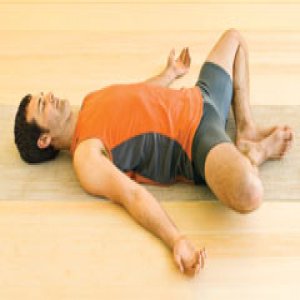
- Put yourself on your back.
- Place your feet down and flex your knees.
- Next, carefully bring the soles of your feet together by extending your knees.
- Gently let your knees drop to either side.
- You are free to use pillows if necessary to keep your knees raised.
- Keep your hands down with the palms facing up.
- This stance is good for five minutes.
Yoga meditation breathing
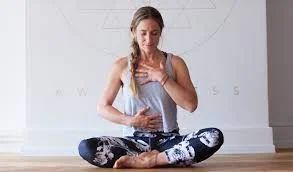
- During yoga and yoga meditations, breathing exercises assist you in maintaining focus. Using the right breathing techniques will calm your mind and help your nervous system relax.
- While there are many different ways to breathe when practicing yoga, abdominal breathing is the main technique used in yoga meditation.
- It’s common for some folks to practice alternate nostril breathing right before a yoga meditation.
Breathing in the abdomen
- As you take a deep breath, expand your tummy while lying on your back. Feel the air rise in your belly.
- Try to release as much air from your belly as you can as you slowly exhale. Continue inhaling in this manner.
Changing up your nostril breathing
- Sitting, use your finger to cover one nostril while breathing in through the open one. Breathe out via your open nose.
- To close one nostril that is open and open the other, switch hands now.
- On the other side, repeat the same breathing pattern.
- Repeat a few times with your hands and nostrils switched.
- In order to feel balanced before engaging in yoga meditation, this can be helpful.
Physical Benefits of Yoga Meditation
- When you wake up the following day, you should notice the physical effects of your yoga meditation.
- You too will enjoy the blissful sensation of aching muscles, particularly if you haven’t worked out in a long time! Yoga and meditation together are a common practice.
- The two disciplines complement one another nicely, and yoga is regarded as a “moving meditation” in and of itself.
- Holding a yoga pose, like a downward dog, for a time is a great approach to starting a meditation practice.
- As you increase to two minutes, you’ll notice that your grudges start to disappear.
Yoga and Stress Relief
- Yoga can also aid in lowering the body’s arousal and physiological stress levels.
- For example, meditation combined with regular yoga practice can lower blood pressure and heart rate, reduce inflammation in the body, and aid in reducing chronic pain issues.
Organize your “Monkey Mind.”
- As previously said, practicing meditation to quiet the body and mind improves our capacity for concentration and focus.
- Sometimes our minds act like rabid monkeys, flitting rapidly between anxiety and humiliation, guilt, and back again.
- Our tendency to have overactive “monkey minds” can make it difficult for us to concentrate due to this lack of attention.
- In consequence, this may significantly lower our experience of the present moment and our energy levels.
- You might not want to miss it, since everything happens in the present moment.
An excellent location to begin
- If you’ve never done yoga before, you might want to start with a more easy form. Before attempting any positions, inform your instructor of any injuries you may have.
- After practicing a few fundamental yoga poses, you might choose to start with a daily 5-minute yoga meditation.
- You might want to do more after realizing how much better you feel. Consult your healthcare professional to be sure yoga and yoga meditation are right for you, just like you should before beginning any fitness program.
Conclusion
There are several advantages of yoga and meditation for both mental and physical well-being. Many benefits that might enhance general health and well-being are provided by these practices, ranging from enhanced flexibility and cardiovascular health to decreased stress and anxiety.
FAQs
A yoga meditation: what is it?
A more precise definition of meditation, or dhyana, in the context of yoga, is a state of pure consciousness. It comes after dharana, the practice of focus, and is the seventh step, or limb, of the yogic path.
How can I do meditation and yoga at home?
6 Ways to Commence
Simply sit. Decide to do nothing more than observe what occurs while remaining motionless.
Pay attention to life’s sounds. Shut your eyes and listen to the sounds that are all around you and within you.
Practice Kindness. Follow the Breath. Utilize a Mantra. Pay attention with bare attention.
Does yoga help with meditation?
Yoga breathing techniques combined with meditation may improve mental wellness. Regular yoga practice improves bodily awareness, eliminates chronic stress patterns, relaxes the mind, focuses attention, and sharpens concentration. It also promotes tranquility and mental clarity.
How can one begin practicing meditation?
Give yourself some time. Although finding the time to meditate can be challenging, it is best done on a daily basis.
Find a spot that is cozy.
Include attentiveness during meditation.
Get into a meditation now.
The difficulty in maintaining mental focus.
Master the art of meditation.
Finish out your meditation.
References
Bsn, T. A. M. R. (2021, August 16). Yoga meditation: benefits, techniques. Ro. https://ro.co/health-guide/yoga-meditation/
Yoga and Meditation: Benefits and Differences | TPOT. (2022, August 23). Turning Point of Tampa. https://www.tpoftampa.com/yoga-and-meditation-benefits-and-differences/


